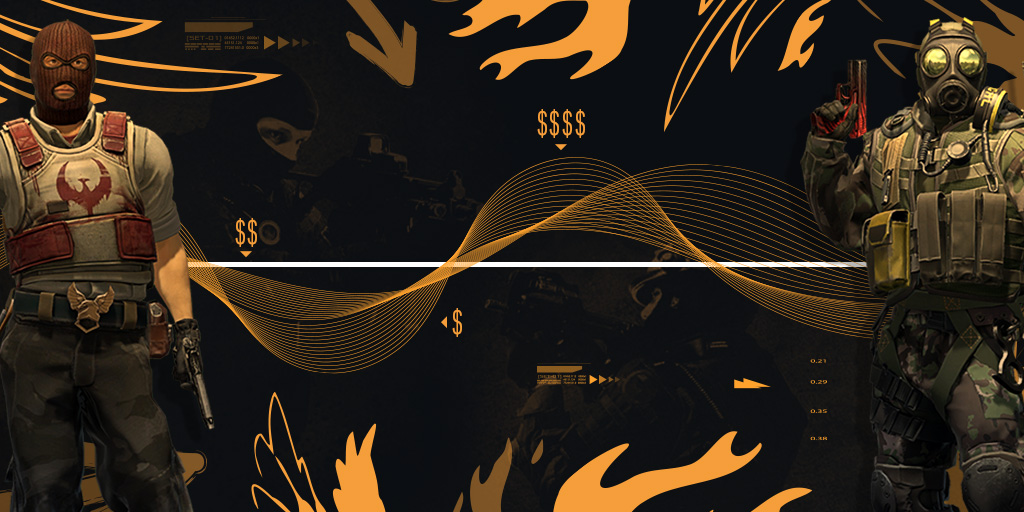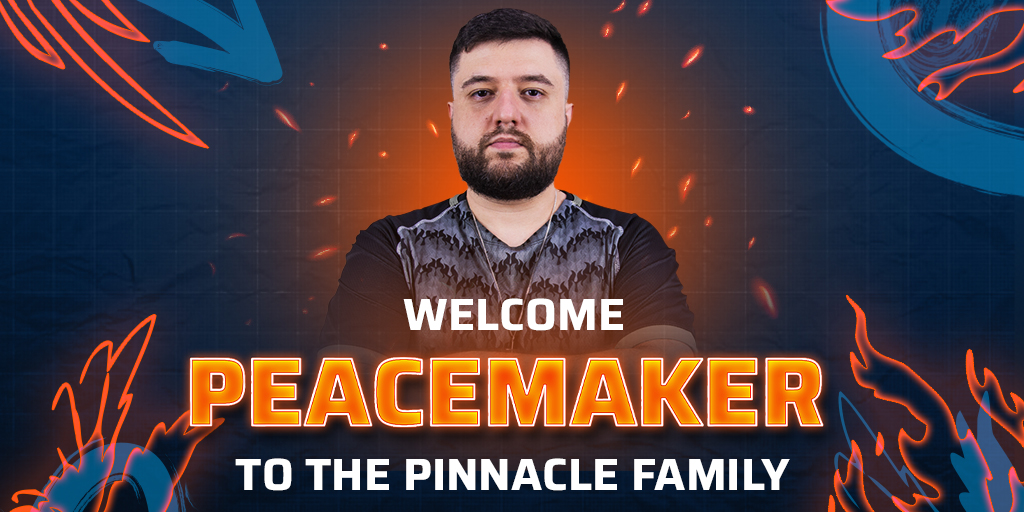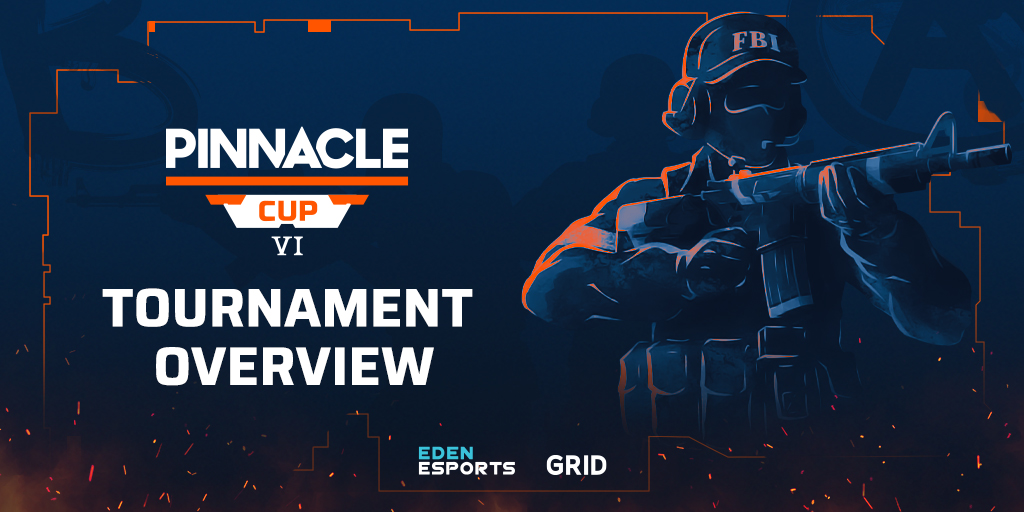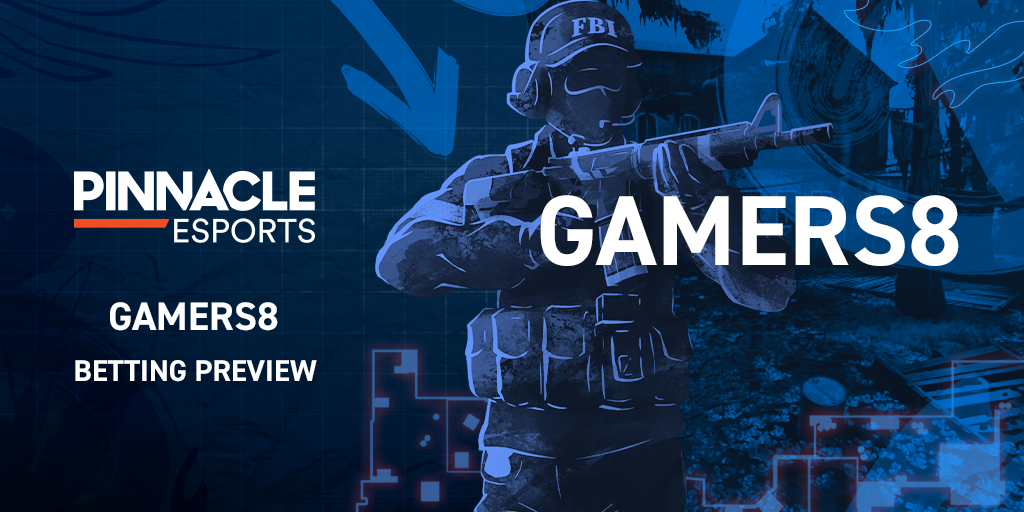If you want to succeed when it comes to CS:GO betting, understanding how the money system works is essential. One key thing to remember before we start is that the Terrorists (T) and Counter-Terrorists (CT) both have slightly different guns and utility they can buy. For example, the CT’s need to buy a defuse kit to defuse the bomb quicker, and obviously the T’s do not.
Simply put, there is an economic system in CS:GO where you gain money for kills and completing objectives, enabling your team to bring better weapons and utility to the battlefield to heighten your chances of success.
Each side starts the game with $800 for the ‘pistol round’. The total amount of money any one player can have at any point during a match is $16,000. Obviously, when the game begins with so few funds, the options for each team are limited. The reason for it being called the pistol round is the only weapon type you are able to afford are pistols.
The items a team can buy in the opening round are listed below with a brief outline of what they do, as well as their cost.
CS:GO money system explained
|
Item
|
Cost ($)
|
Info
|
|
P250
|
300
|
Pistol, more range for headshots than a Glock-18
|
|
CZ75-Auto
|
500
|
Automatic pistol, only 24 bullets
|
|
Five-Seven (CT)
|
500
|
Powerful close range
|
|
Tec-9 (T)
|
500
|
Excellent running accuracy and high fire rate
|
|
Dual Berettas
|
300
|
Look like a cowboy, becoming very popular due to price
|
|
Desert Eagle
|
700
|
1 bullet to the head known as a “one deag”
|
|
Flashbang
|
200
|
Blinds Opponent
|
|
Smoke Grenade
|
300
|
Distributes smoke to a small area for a period of time
|
|
HE Grenade
|
300
|
Explosive grenade
|
|
Molotov Cocktail (T)
|
400
|
Creates a fire on the ground over a certain area
|
|
Incendiary Grenade (CT)
|
600
|
Does the same as the Molotov, except can be thrown further
|
|
Kevlar Vest
|
650
|
Increases protection from body shots, prevents “aim punch”
|
You can see that outside of just pistols, there are a wide variety of things someone can spend their money on, and managing who has what in this round is important. However after the pistol round, it gets slightly more complicated as you get into win and loss bonus, plant and defuse bonuses and the cost of more powerful weapons. Knowledge of the CS:GO money system is crucial if you want to be an expert at betting on the game.
BET ON CS:GO ESPORTS
Get great odds on CS:GO with Pinnacle.
Sign upLog in
Increasing economy
The most common way for a team to earn money is by killing opposing players, which gives them a kill reward. The kill reward differs slightly depending on which gun you are using. Most weapons offer a rewards of $300 for a kill, but there are some exceptions. The AWP and the CZ-75 both offer just $100 for a kill. The most rewarding weapon type, barring a knife kill, are the Shotguns, which offer a $900 reward. However, the usage for those are incredibly limited, with you needing to be in close proximity for the gun to be effective.
The AK-47 is a preferred weapon due to killing someone with 1 bullet to the head regardless of head armour or not.
Barring the P90, all SMGs offer a $600 reward. Again, the usage of these weapons are situational, as they’re more effective against opponents without armour. As such, the usage of these tend to be in force buy or anti-eco rounds to build up the team’s economy.
As well as killing players as a way to earn money, you can also complete objectives individually and as a team. If your side wins a round they will receive $3,250 per player, regardless of if you were T or CT. If the bomb is planted and defused, each CT player will receive an extra $250. The same applies the other way, with each T player receiving the extra $250 if the bomb is planted but successfully defended.
Sometimes a T player might decide to save his gun, enabling them to bring it into the next round. In this scenario, assuming the bomb wasn’t planted and the normal round timer ticked down, the player will receive $0, and their dead teammates will receive their losing bonus (which will be explained soon), and the CT’s will receive $3,250.
The losing bonus is CS:GO’s way of stopping one side from entirely snowballing the other, so the team that loses a round will be rewarded with money. The losing bonus increases +$500 for each round a team loses consecutively, up to a maximum of five. So, the totals are $1,400, $1,900, $2,400, $2,900 and $3,400.
However, it’s not that simple. Not only do the loss bonuses rank consecutively, they effectively work as a tally, and the numbers go down by one for each time they win a round. For example, if a team loses five rounds in a row and are on the max loss bonus of $3,400, then go on to win one round before losing the next their loss bonus will be $2,900.
Further complicating that fact, is that at the start of each half teams are treated like they have already lost a round for their loss bonus counter. So, if one player had no kills in the pistol round, completed no objectives, lost the round, and spent all of the $800, their total money for the next round would be $1,900.
Because the opposing team’s money is not that great either as they have only won one round, a lot of teams in this situation will decide to force buy. A force buy is when you want to try and win the next round, but cannot afford a full buy, so spend whatever you have to get a buy together.
If the T-side was unable to plant the bomb in the opening round, they will most likely have to force buy to try and win back a round before the CT side can build up a bank.
By this point, if the team loses the round again, they will have the third losing bonus, which is $2,400, so their money, depending on what happened in the previous round will be somewhere around this number. Meanwhile, the opposing team will have won two rounds and have their kill bonuses from the kills they obtained as well as at least one objective, so their money will be high.
The losing team has to wait, and eco one round, to enable them to get a full buy out in the next. An eco-round is where you either buy nothing or only a very small amount. They will then be on a fourth loss bonus, so $2,400 + $2,900, a total of $5,300. On the CT side, this is enough to get an M4A4 ($3100), Kevlar + Helmet ($1,000), leaving $1,200 for grenades. You can see just from this example how important managing the economy is in CS:GO.
What about the T side?
Things can get more complicated again when things are reversed. The equipment is the same as listed above, and the second round is largely the same, depending on whether or not the T-side managed to plant the bomb. If the bomb was planted in the opening round, players receive a bonus $800.
So, if a team loses the opening round but plants the bomb, the money will roughly be $1,900 + $800, so a total of $2,700 if you got 0 kills. The team would then have to decide if they were to eco the following round in order to achieve a full buy by the third round. If they started the second round with $2,700 each, and lost it without planting a bomb then they’d be up to $5,100, more than enough to go have a full buy.
If the T-side was unable to plant the bomb in the opening round, they will most likely have to force buy in the same manner as the CT would do. This is to try and win back a round before the CT side can build up a bank, and also because the side cannot buy in the third round anyway.
Other factors that can affect the economy
There are some other factors as well that you should pay attention to while watching CS:GO. For example, at the start of a round if you see a player with far fewer funds than their other teammates on the T-side, there is a good chance they were killed or saved their weapon after the time. This is because if you die after the timer runs out on the T-side, you are given no money bonus into the next round.
Dying after the time runs out can be catastrophic to the T-side economy. If the team had been on a few rounds losing bonus, there is a chance the player will have close to $0, while the others have $3,400. This can heavily impact the following round, with one player not being able to afford anything.
You can almost predict what buy will come next and this will help you make more informed CS:GO betting decisions.
Another example would be eco rounds. While both sides use eco rounds to improve their economy, they can have very different goals for either side. T-side eco rounds usually have one main objective, planting the bomb down to get the $800 bonus into the next round. The secondary goal would be to kill as many CTs as possible to impact the defensive team. Due to CT-side weaponry being more expensive, this could have substantial knock-on effects later in the game.
For a CT-side eco, they will have one single aim in the round – kill opposing players to get their guns. The T-side’s AK-47 is a preferred weapon, as it is able to kill a player with just one bullet to the head regardless of if they have head armour or not. If a CT-side can obtain 2 weapons and kill 3 Ts that would be considered a really good eco round.
Now you have a basic understanding of what the CS:GO economy is, you can open a stream and watch some CS:GO to test out your knowledge. Have a look at the side’s money and equipment, and see if you can decipher what they've or what they will do next. You should see, in almost no time at all, you can almost predict what buy will come next and this will help you make more informed betting decisions.







